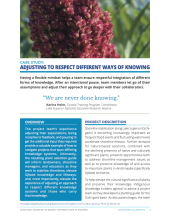
To help elevate the cultural significance of plants and preserve their knowledge, Indigenous knowledge holders agreed to advise a project team as they developed a planting guide for the Gichi-gami basin.
Bringing Plant-Scale Knowledge to Shoreline Habitat Practitioners in the Lake Superior Basin
Shoreline stabilization along Lake Superior (gichigami) is becoming increasingly important as frequent flood events and fluctuating water levels accelerate shoreline erosion. Further demand for nature-based solutions, combined with the declining presence of native and culturally significant plants, presents opportunities both to address shoreline management issues as well as to preserve knowledge of and access to important plants in Anishinaabe (specifically Ojibwe) territories. To help elevate the cultural significance of plants and preserve their knowledge, Indigenous knowledge holders agreed to advise a project team as they developed a planting guide for the Gichi-gami basin. As discussions began, the team quickly discovered differing expectations about what and how Indigenous knowledge would inform the final guide.
About this document
Download the PDF to read the full narrative, which includes a deeper dive into the project's background and approach, plus advice and insights for collaborative science projects engaging with partners that bring knowledge from different knowledge systems.
Salgado, V., Heim, K., Croll, R., Panci, H., Smith, K. (2023, March). Case Study: Adjusting to Respect
Different Ways of Knowing. National Estuarine Research Reserve System (NERRS) Science
Collaborative. Retrieved from https://nerrssciencecollaborative.org/guide/design/process.
This tool is part of an online Guide to Collaborative Science and was developed by the National Estuarine Research Reserve System’s Science Collaborative Program.
Location: Design Project > Design Your Collaborative Process